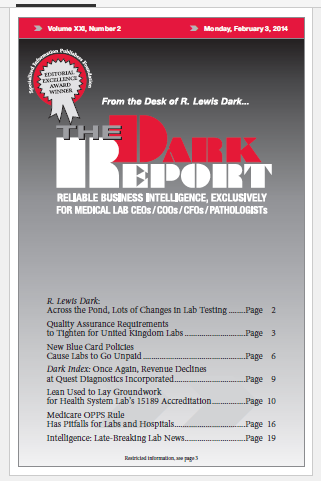CEO SUMMARY: Widespread frustration continues within the independent clinical laboratory community about the new Blue Card rules that took effect in October 2012. That was when the Blue Cross Blue Shield Association revised its Blue Card program so that labs must bill the local plan in the service area where the specimen was obtained/collected. Further, …
New Blue Card Policies Cause Labs to Go Unpaid Read More »
To access this post, you must purchase The Dark Report.


